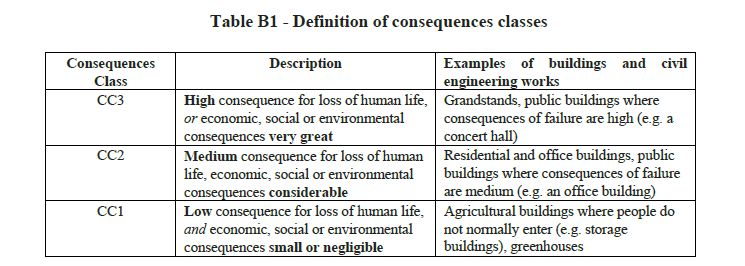mte12
Structural
- Mar 1, 2022
- 141
In calculating wind loads to BS EN 1991-1-4, there is an aspect which I a trying to reconcile with AS 1170.2 and AS 1170.2.
In AS 1170.2 there's an Annual probability of exceedance from Table 3.3. For a Design working life of 50 years with an Importance level of 2, the API is 1/500.
AS 1170.2 states: Annual probability of exceedance is the inverse of the so-called ‘return period’ better described as the average recurrence interval.
BS EN 1991-1-4 refers to annual probability of exceedence of 0.02, which is equivalent to a mean return period of 50 years.
Refers to BS EN 1990 4.1.2 (7)P which mentions "However in some cases the character of the action and/or the selected design situation makes another fractile and/or return period more appropriate".
Firstly need to check I'm comparing apples with apples.
Then I'm wondering why a return period of more than 50 years (say 250 years or 500 years) is not explicitly mentioned, rather than mention in 4.1.2 (7)P. Or does it it come out in the wash, as BS EN seems to use 10 minute wind speeds with an exposure factor.
The other thing I noticed was a consequence factor (kf) from BS EN 1990.
See attachment for reference.
In AS 1170.2 there's an Annual probability of exceedance from Table 3.3. For a Design working life of 50 years with an Importance level of 2, the API is 1/500.
AS 1170.2 states: Annual probability of exceedance is the inverse of the so-called ‘return period’ better described as the average recurrence interval.
BS EN 1991-1-4 refers to annual probability of exceedence of 0.02, which is equivalent to a mean return period of 50 years.
Refers to BS EN 1990 4.1.2 (7)P which mentions "However in some cases the character of the action and/or the selected design situation makes another fractile and/or return period more appropriate".
Firstly need to check I'm comparing apples with apples.
Then I'm wondering why a return period of more than 50 years (say 250 years or 500 years) is not explicitly mentioned, rather than mention in 4.1.2 (7)P. Or does it it come out in the wash, as BS EN seems to use 10 minute wind speeds with an exposure factor.
The other thing I noticed was a consequence factor (kf) from BS EN 1990.
See attachment for reference.

